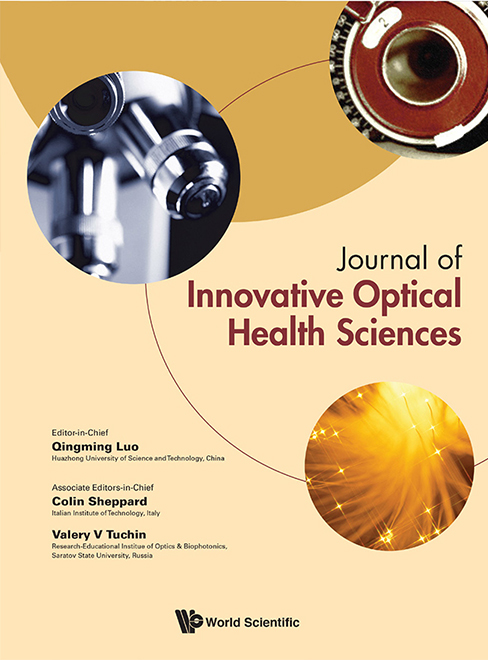 View fulltext
View fulltext
Photoacoustic (PA) imaging with much deeper tissue penetration and better spatial resolution had been widely employed for the prevention and diagnosis of many diseases. In this study, a new type of hydrogen peroxide (H2O2)-activat
In this paper, optical coherence tomography (OCT) and surface-enhanced Raman spectroscopy (SERS) were used to characterize normal knee joint (NKJ) tissue and knee osteoarthritis (KOA) tissue ex vivo. OCT images show that there is
This work demonstrates a smartphone-based automated fluorescence analysis system (SAFAS) for point-of-care testing (POCT) of Hg(II). This system consists of three modules. The smartphone module is used to provide an excitation lig
Background: Lung cancer is one of the most common malignant tumors worldwide. Currently, effective screening methods for early lung cancer are still scarce. Breath analysis provides a promising method for the pre-screening or earl
Photoacoustic imaging (PAI) has been developed, and photoacoustic computed tomography (PACT) is widely used for in vivo tissue and mouse imaging. Simulated annealing (SA) algorithm solves optimization problems, and compressed sens
Fluorescence microscopy has become an essential tool for biologists, to visualize the dynamics of intracellular structures with specific labeling. Quantitatively measuring the dynamics of moving objects inside the cell is pivotal
Early diagnosis of liver cancer plays a significant role in reducing its high mortality. In this preliminary study, the feasibility of using serum surface-enhanced Raman spectroscopy (SERS) to identify liver cancer was studied. Se
In this paper, we propose a new fluorescence emission difference microscopy (FED) technique based on polarization modulation. An electro-optical modulator (EOM) is used to switch the excitation beam between the horizontal and vert










